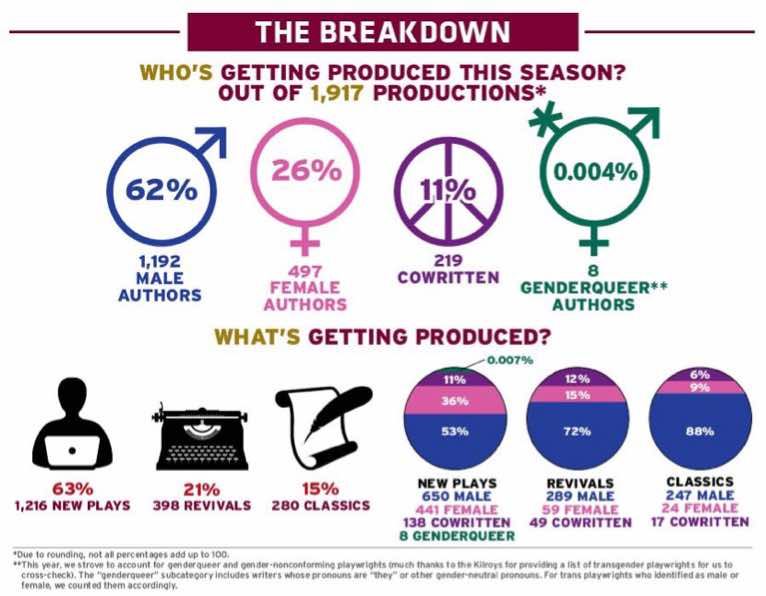Alex Ates on October 10th, 2018 has proudly proclaimed that the 'Dawn of the Female Playwright is Upon Us' in their article for backstage. The most recent list of the most produced playwrights is decidedly more female than it has been in past years. As the article states:
American Theatre magazine, the trade publication for Theatre Communications Group, released its statistics for the most-produced plays and playwrights working in the United States today.
This year’s list features work that is largely female-powered. Out of the 11 plays listed, eight were written by women. And even the most-produced play, Lucas Hnath’s “A Doll’s House, Part 2,” features almost all-female characters. With only three male playwrights on the complete list, the publication reports a historic proportion. Further, on the list of most-produced playwrights in the country, there are six playwrights of color—another notable advancement for a field which has often been criticized for being predominantly white.
Though this is a banner year for women produced plays and female protagonists, the celebration feels short lived. In an article from American Theatre from September 2017, Rob Weinert-Kendt writes that the more things change the more they stay the same.
The long arc is bending towards gender inclusion and gender parity, but we would have reason to despair. Writers are still majority male and cisgender. In researching gender parity, there is limited numbers available on gender inclusion outside of cisgender males. The production list is still very long on male driven work.

The breakdown is greater than zero, and the breakdown of female playwrights continues to grow, but we are far from gender parity, and far from a range of gender expression in plays being produced.
If this is a dawn of the female playwright, we are slipping out of the night, and just beginning to see the fruit of our labor. Our work that we do, the fight to see an increase of female writing, is in its infancy.
It is not midday, it is not afternoon, it is simply the dawn of equality. There have been strides and improvements, but a long way to move towards equality.
On Twitter, I have made the call that for 2020 all theatres and organizations must commit to promote only female playwrights.
If it is truly the dawn of the female playwright, it's time for theatres and decision makers to put their money where their mouth is. Let's push for women to be produced, and not stop where we are now.
Everyone knows there is a problem, but it's difficult to fix when no one wants to take a risk to fix it.
Imagine it. If in one cycle, during one theatre season, we only saw female written work around the world, how would that change the landscape?
A new dawn indeed.
![]() at the top of the post
at the top of the post![]() at the top of the post
at the top of the post